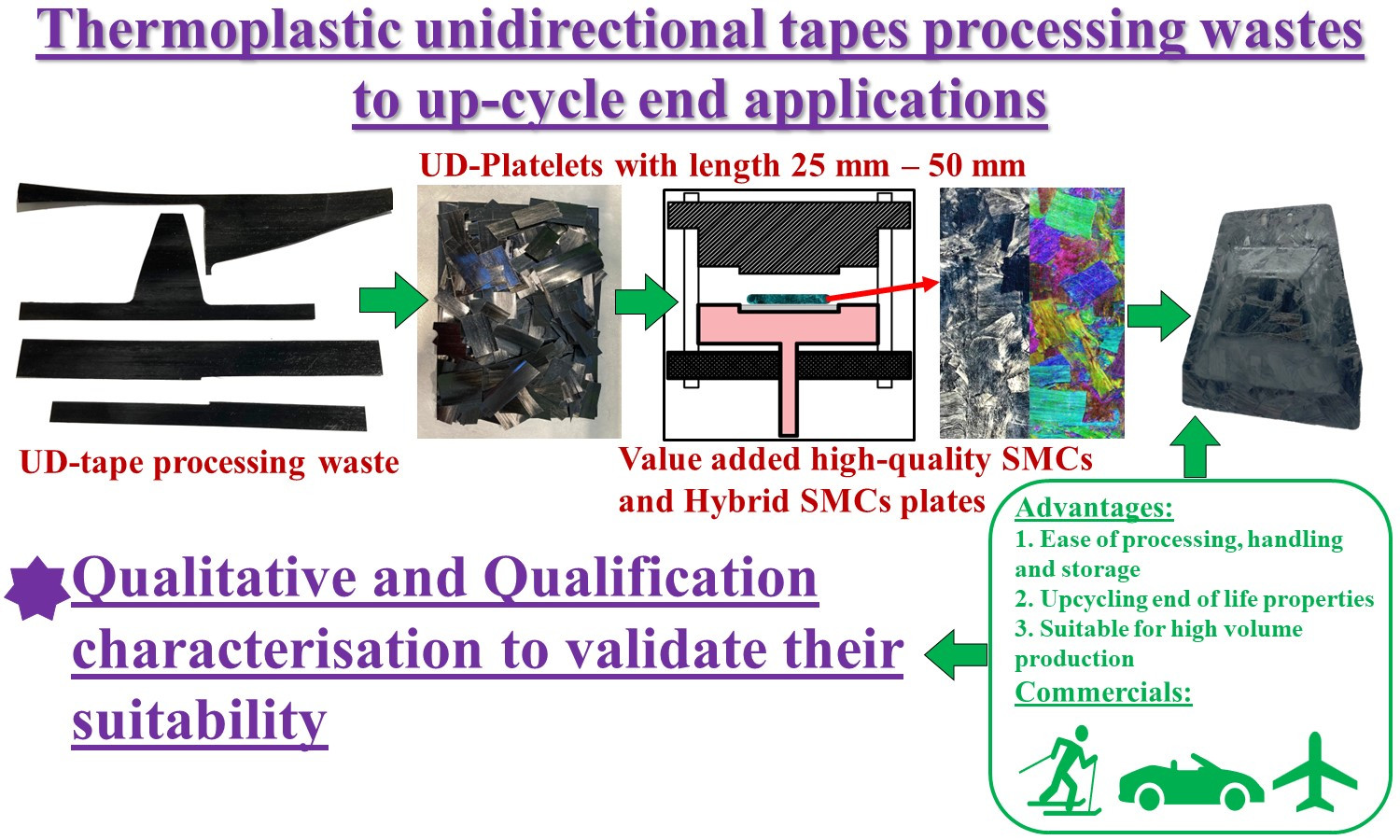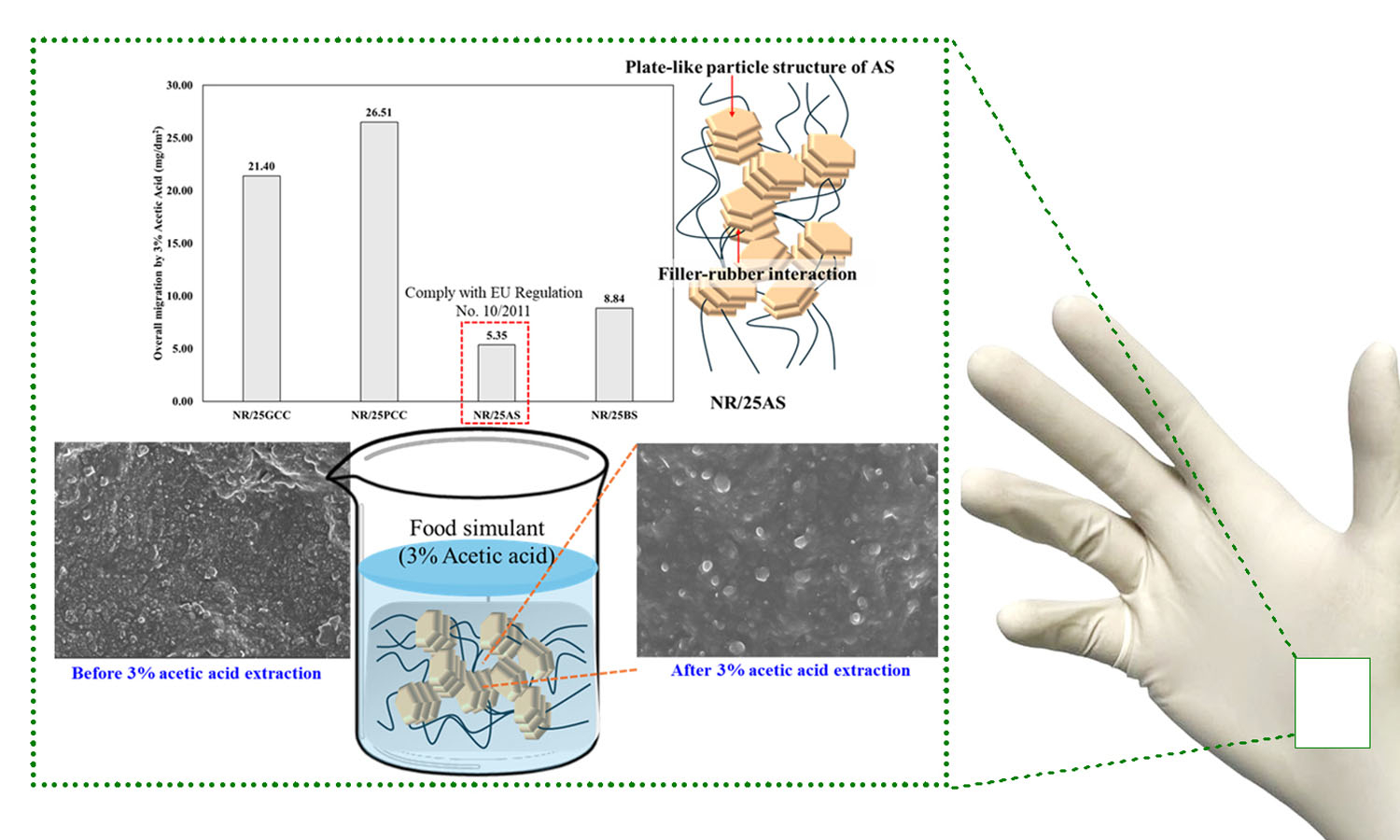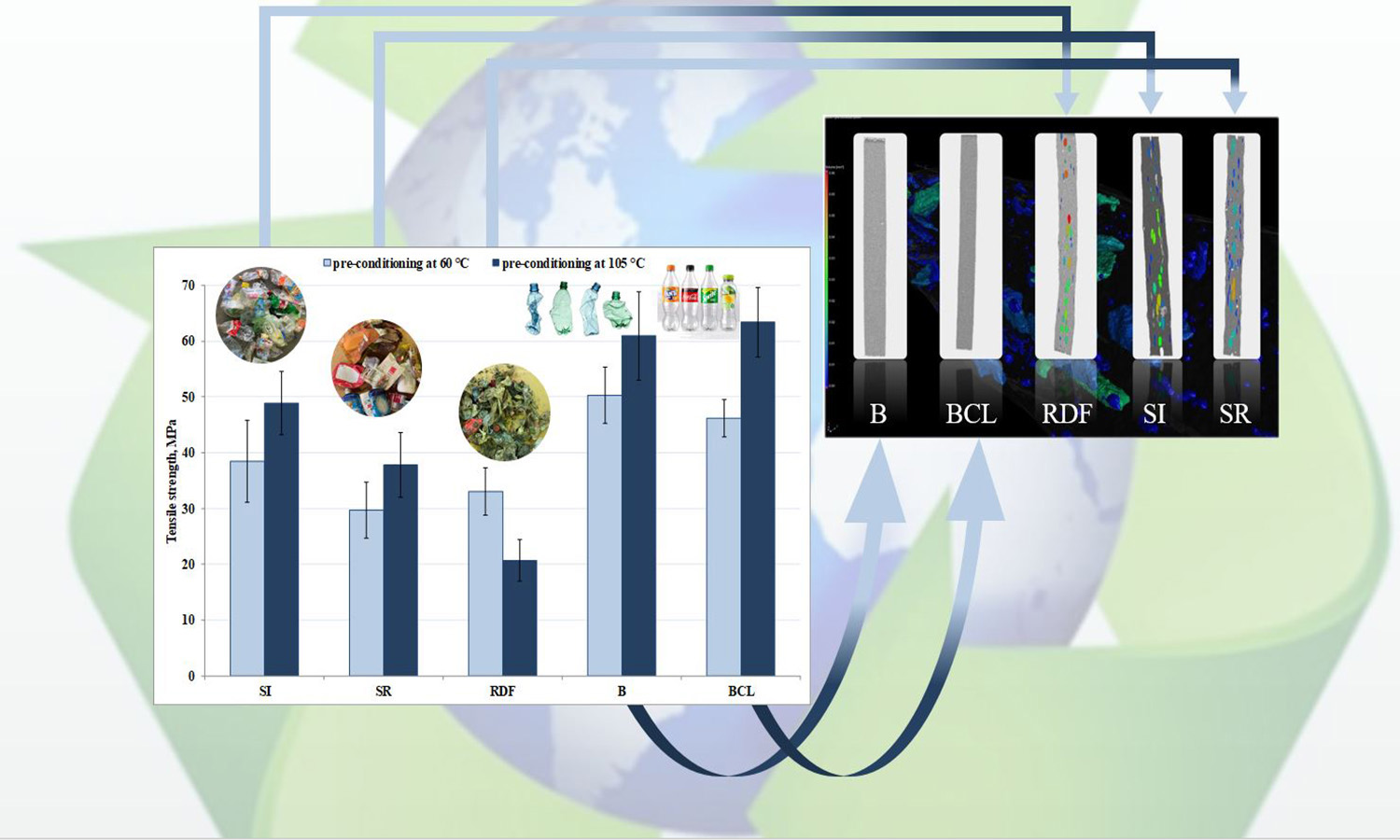Thermo-mechanical characterisation of polycarbonate-based sheet moulded composites fabricated from off-cut waste unidirectional tapes
Chethan Savandaiah , Andreas Kapshammer
, Andreas Kapshammer , Bernhard Plank
, Bernhard Plank , Vanja Stolcer
, Vanja Stolcer , Christian Marschik
, Christian Marschik , Zoltan Major
, Zoltan Major
 , Andreas Kapshammer
, Andreas Kapshammer , Bernhard Plank
, Bernhard Plank , Vanja Stolcer
, Vanja Stolcer , Christian Marschik
, Christian Marschik , Zoltan Major
, Zoltan Major
Vol. 18., No.9., Pages 883-900, 2024
DOI: 10.3144/expresspolymlett.2024.66
DOI: 10.3144/expresspolymlett.2024.66
GRAPHICAL ABSTRACT

ABSTRACT
Thermoplastic (TP) composites, known for their ease of handling, suitability for high production rates, and recyclability, are emerging as a promising alternative to thermoset-based composites. The expected growth in TP-based composites in automotive, sports, and aerospace industries may result in increased post industrial waste. To address this, we repurposed our in-house process scrapped carbon fibre-reinforced polycarbonate tapes into sheet moulding compounds (SMCs) and Hybridised SMCs (Hy-SMCs) using compression moulding. In Hy-SMCs, the top and bottom layers were unidirectional tapes, while the core section had randomly oriented platelets in a 50:50 ratio. Our evaluation included qualitative and thermo-mechanical standard tests. The incorporation of unidirectional tapes in Hy-SMCs significantly improved the tensile and flexural properties of SMCs. Specifically, these enhancements resulted in an impressive 81 to 85% increase in mechanical strength compared to the standard aluminium grade. Additionally, Hy-SMCs exhibited a 120 to 130% increase in tensile and flexural properties compared to SMCs. Fractography revealed a complex relation between fractured surfaces, with multimode failures in both SMCs and Hy-SMCs. Also, the non-destructive evaluation showed platelet reorientation during consolidation and localised voids with increased specimen thickness.
RELATED ARTICLES
Xue Xu, Rujie Li, Li Gao, Beibei Sun, Hongming Liu, Shiai Xu
Vol. 19., No.9., Pages 959-976, 2025
DOI: 10.3144/expresspolymlett.2025.72
Vol. 19., No.9., Pages 959-976, 2025
DOI: 10.3144/expresspolymlett.2025.72

As polyvinyl chloride (PVC) films are hard and brittle in a low-temperature environment, aliphatic dibasic acid ester plasticizers with different acid chain lengths were fabricated, i.e. di(2-ethylhexyl) adipate (DOA), di(2-ethylhexyl) sebacate (DOS) and dioctyl dodecanedioate (DOD), and their effects on the cold-resistant properties of PVC were investigated using experiments and molecular dynamics (MD) simulations. The brittleness temperature and tensile properties of plasticizers/PVC are negatively related to the acid chain length of the aliphatic dibasic acid esters. The brittleness temperatures of the three systems are all below –50 °C. In-situ low-temperature tensile tests and aging tests indicate that DOA/PVC exhibits the best cold resistance and stability. MD simulations further reveal that the best compatibility between DOA and PVC is attributed to its strong binding energy and weak hydrogen bonding interactions, while van der Waals forces are dominant in DOS/PVC and DOD/PVC. This study elucidates the structure-property relationship between aliphatic dibasic acid ester plasticizers and PVC from the perspective of molecular interactions, and provides insights into the design of cold-resistant PVC plasticizers.
Sirithorn Kaewklum, Parisa Faibunchan, Apinya Krainoi, Banyat Cherdchim, Jutharat Intapun
Vol. 19., No.9., Pages 929-945, 2025
DOI: 10.3144/expresspolymlett.2025.70
Vol. 19., No.9., Pages 929-945, 2025
DOI: 10.3144/expresspolymlett.2025.70

Powder-free natural rubber gloves for chemical migration resistance of food-contact grade are prepared using a variety of fillers, including ground calcium carbonate (GCC), precipitated calcium carbonate (PCC), aluminum silicate (AS), and barium sulfate (BS)-filled natural rubber (NR), respectively. The properties of NR gloves, including mechanical, dynamic mechanical, and thermal properties, were investigated. Furthermore, the overall migration test of NR gloves was conducted according to the regulations for food contact gloves (EU Regulation No. 10/2011), using 3% acetic acid as the simulant. Among the fillers studied, the plate-like particles of AS facilitated the most effective filler-rubber interactions and reinforcement in AS-filled natural rubber (NR/AS). Consequently, the highest crosslink density, force at break, and damping properties of NR gloves were achieved by applying AS in the NR matrix. Moreover, the lowest overall migration level was observed for NR/AS with a value of 5.35 mg/dm2, which complies with EU Regulation (overall migration of food simulants shall not exceed 10 mg/dm2). Therefore, NR gloves filled with AS are suitable for food-contacting NR gloves.
Janka Bobek-Nagy, Róbert Kurdi, András Kovács, Lilla Simon-Stőger, Márton Szigeti, Csilla Varga
Vol. 17., No.11., Pages 1166-1179, 2023
DOI: 10.3144/expresspolymlett.2023.88
Vol. 17., No.11., Pages 1166-1179, 2023
DOI: 10.3144/expresspolymlett.2023.88

Under
the era of circular economy, the deposit-refund system (DRS) for e.g. polyethylene
terephthalate (PET) is thought to be a good choice to achieve a more structured
plastic recycling. The present research has the aim to make a comprehensive description
and a practical guideline in order to evaluate how collection and separation
system influence the quality and efficiency of mechanical recycling of PET. The
DRS has been symbolized by manually collected bottles with (BCL) and without
(B) caps and labels. Samples have been given from the selective income (SI) and
the sorting residue (SR) of a manual selective waste sorting plant and PET
fraction of refuse derived fuel (RDF). Based on preliminary qualification results
such as melt flow indices (MFI), PET bottles are worth selecting into the main
colours like water clear, blue, and all the others together, referred to as
PET-A, PET-B, and PET-D fractions of the sorting plant. The SR seemed to be a beneficial
raw material for PET recycling as both mechanical and rheological properties
were proper enough. PET separated from the Mechanical Biological Treatment
(MBT) plant as RDF showed the worst processing and mechanical properties, but
both can be improved with deeper precleaning. X-ray tomography (CT) scans have
shown a correlation between the source of waste and the gas void structure
which influence the macroscopic mechanical properties.



